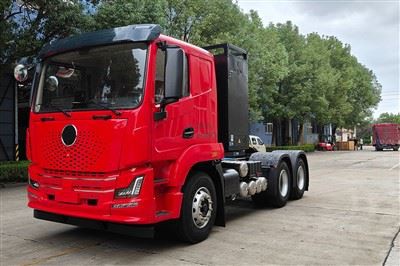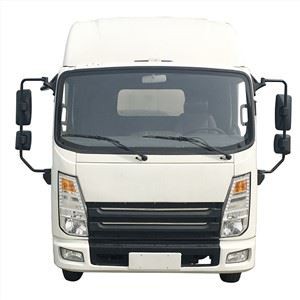Understanding Garbage Dumpster Trucks: A Complete Guide
In today’s world, waste management is an essential service that keeps our communities clean and safe. At the heart of this operation lies the garbage dumpster truck, a vital piece of equipment that plays a crucial role in collecting and transporting waste. This article will explore everything you need to know about garbage dumpster trucks, including their types, functionalities, operational processes, and maintenance tips.
What is a Garbage Dumpster Truck?
A garbage dumpster truck is a specialized vehicle designed for the efficient collection and transportation of waste materials from residential and commercial areas to landfills or recycling facilities. These trucks are equipped with hydraulic systems that facilitate the lifting and emptying of dumpsters and containers. Their design and functionality can vary significantly based on their specific use and the type of waste they are intended to handle.
Types of Garbage Dumpster Trucks
1. Front-Loading Garbage Trucks
Front-loading garbage trucks are commonly used in commercial waste collection. They feature a front-mounted mechanism that allows drivers to lift dumpsters from the front. These trucks are efficient for collecting large volumes of waste, and they require less manual handling.
Advantages

- Quick collection of multiple dumpsters.
- Can accommodate larger waste containers.
- Efficient in urban environments.
Disadvantages
- May not be suitable for residential use due to size.
- Higher initial investment compared to other types.
2. Rear-Loading Garbage Trucks
Rear-loading garbage trucks are primarily used for residential waste collection. They have a rear compartment where garbage is loaded manually or mechanically. These trucks can often navigate narrow streets and tight spaces, making them ideal for suburban areas.
Advantages
- Compact size allows for easy access in residential areas.
- Lower operational costs compared to front-loading trucks.
Disadvantages
- Less efficient for high-volume commercial collections.
- Requires more labor for manual loading.
3. Side-Loading Garbage Trucks
Side-loading garbage trucks feature a side-mounted compaction system that allows for the automated collection of waste from containers. These trucks can be operated by a single driver, minimizing the need for additional crew members.
Advantages
- Automated collection reduces labor costs.
- Efficient routing and operational flexibility.
Disadvantages
- Limited capacity compared to front-loaded trucks.
- May have difficulties in tight areas.

How Do Garbage Dumpster Trucks Work?
Garbage dumpster trucks operate through a systematic process of collection, compaction, and transportation. Here’s a breakdown of how they work:
1. Collection
The truck is driven to the designated collection points, where dumpsters are located. Depending on the type of truck, the loading mechanism engages to lift the dumpster over the truck’s body, allowing waste to be emptied into the compaction area.
2. Compaction
Once the waste is loaded, the truck’s compaction system compresses the garbage to maximize space. This not only reduces the number of trips needed to transport waste but also minimizes odor and prevents spillage.
3. Transportation
After compaction, the garbage dumpster truck proceeds to transport the waste to landfills, recycling centers, or waste-to-energy plants. GPS and routing software are often used to optimize the travel route for efficiency.
Maintenance Tips for Garbage Dumpster Trucks
1. Regular Inspections
To ensure the longevity of garbage dumpster trucks, conduct regular inspections of critical components, such as hydraulic systems, brakes, and tires. Early detection of issues can prevent costly repairs.
2. Cleaning and Sanitization
Routine cleaning of the truck helps prevent unpleasant odors and hygiene issues. Use eco-friendly cleaning solutions to maintain a clean and sanitary environment.
3. Lubrication of Moving Parts
Lubrication reduces wear and tear on moving components, ensuring that the hydraulic systems function smoothly. Follow the manufacturer’s recommendations for lubrication schedules.
4. Tire Maintenance
Due to the weight of the loads, regular tire maintenance is critical. Check tire pressure and tread regularly to ensure safety and efficiency.
5. Documentation
Maintain thorough records of all maintenance activities, inspections, and repairs. This helps track the efficiency of the vehicle and aids in budgeting for future repairs.
Practical Examples and Tips for Waste Management

1. Understanding Local Waste Management Regulations
Each municipality may have different regulations regarding waste collection. Understanding these rules can help streamline operations and ensure compliance, avoiding fines or other penalties.
2. Educational Programs
Implementing educational programs for communities can promote responsible waste disposal. Inform local residents about recycling programs or alternative disposal methods to reduce landfill usage.
3. Utilizing Technology
Incorporating GPS routing and real-time tracking can vastly improve efficiency. It allows for better route planning, reducing fuel consumption and improving service delivery.
4. Working with Local Governments
Partner with local governments to coordinate waste collection efforts, especially during peak times such as holidays or large communal events.
Cost Considerations for Garbage Dumpster Trucks
The cost of garbage dumpster trucks can vary widely based on factors like type, size, and features. Typically, prices for new trucks range from $100,000 to $300,000, while used models can be more affordable. Below is a comparison table:
| Type of Truck | Average New Price | Average Used Price |
|---|---|---|
| Front-Loading Truck | $200,000 – $300,000 | $80,000 – $150,000 |
| Rear-Loading Truck | $120,000 – $200,000 | $50,000 – $100,000 |
| Side-Loading Truck | $150,000 – $250,000 | $70,000 – $120,000 |
Environmental Impact of Garbage Dumpster Trucks
Garbage dumpster trucks play an essential role in waste management, but their environmental impact must be considered. Here are some key aspects:
1. Carbon Emissions
Like most heavy-duty vehicles, garbage trucks emit greenhouse gases. Opting for environmentally friendly alternatives or upgrading to electric trucks can help reduce this impact.
2. Noise Pollution
Garbage trucks can create significant noise, especially during early morning collections. Consider routing and scheduling changes to minimize disturbances to residents.
3. Recycling and Waste Diversion
Promoting recycling through the use of dedicated recycling trucks helps divert waste from landfills and reduces the overall environmental footprint of waste management operations.
Frequently Asked Questions (FAQs)
1. What materials can be collected by garbage dumpster trucks?
Garbage dumpster trucks can collect various materials, including general waste, recyclables, yard waste, and construction debris, depending on local regulations and truck specifications.
2. How often do garbage dumpster trucks usually collect waste?
The frequency of waste collection varies by municipality, with some areas having daily, weekly, or bi-weekly collections. It’s advisable to check with local waste management authorities for the specific schedule in your area.
3. What should I do if my garbage is not collected?
If your garbage is not collected, contact your local waste management service to report the issue. They can provide information on collection schedules and any potential delays.
4. Can dumpsters be overloaded?
Overloading dumpsters can result in safety hazards and may violate local regulations. It’s essential to adhere to weight limits and avoid placing hazardous materials in dumpsters.
5. What are the benefits of using side-loading garbage trucks?
Side-loading garbage trucks offer automated collection, reduced labor costs, and increased efficiency in service delivery. They also allow for a single-driver operation, further minimizing costs.
6. How are garbage dumpster trucks environmentally friendly?
Many garbage dumpster trucks are being equipped with alternative fuel sources, such as compressed natural gas (CNG) or even electric options, which can significantly reduce their environmental impact and carbon footprint.
